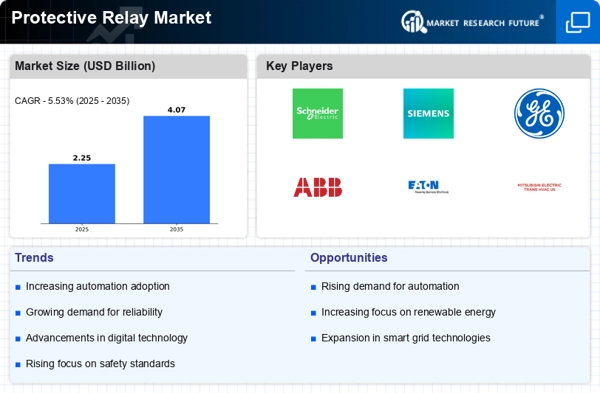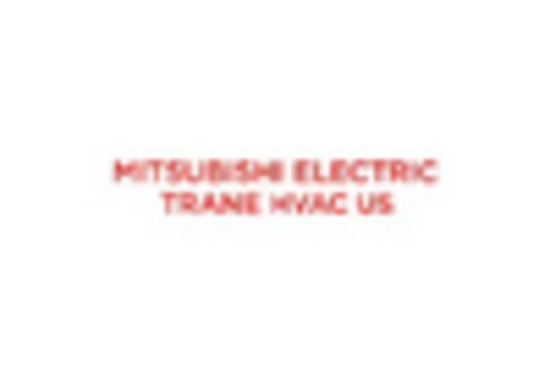-
EXECUTIVE SUMMARY
-
1.1.
-
Market Overview
-
Key Findings
-
Market Segmentation
-
1.4.
-
Competitive Landscape
-
Challenges and Opportunities
-
Future
-
Outlook
-
\r\n
-
MARKET INTRODUCTION
-
Definition
- Research Objective
- Assumption
-
2.2.
-
Scope of the study
-
2.2.3.
-
Limitations
-
RESEARCH METHODOLOGY
-
Overview
-
Data Mining
-
Secondary Research
-
Primary Research
- Primary Interviews
- Breakdown of Primary Respondents
-
and Information Gathering Process
-
Forecasting Model
-
Market Size Estimation
- Bottom-Up
- Top-Down Approach
-
Approach
-
Data Triangulation
-
3.8.
-
Validation
-
\r\n
-
MARKET DYNAMICS
-
Overview
-
4.2.
-
Drivers
-
Restraints
-
Opportunities
-
MARKET FACTOR ANALYSIS
-
Value chain Analysis
-
Porter's Five Forces Analysis
- Bargaining Power of Buyers
- Threat of Substitutes
- Intensity
-
5.2.1.
-
Bargaining Power of Suppliers
-
5.2.3.
-
Threat of New Entrants
-
of Rivalry
-
COVID-19 Impact Analysis
- Market Impact Analysis
- Regional Impact
- Opportunity and Threat Analysis
-
\r\n
-
PROTECTIVE RELAY MARKET, BY APPLICATION (USD BILLION)
-
Transmission
-
Distribution
-
Generation
-
Industrial Equipment
-
PROTECTIVE RELAY MARKET, BY TYPE (USD BILLION)
-
Electromechanical
-
Solid State
-
Digital
-
PROTECTIVE RELAY MARKET, BY END
-
USER (USD BILLION)
-
Utilities
-
Manufacturing
-
Energy
-
and Power
-
Transportation
-
PROTECTIVE RELAY MARKET, BY VOLTAGE
-
(USD BILLION)
-
Low Voltage
-
Medium Voltage
-
High Voltage
-
PROTECTIVE RELAY MARKET, BY REGIONAL (USD BILLION)
-
North America
- US
- Canada
-
Europe
- Germany
- UK
- France
- Russia
- Italy
- Rest of Europe
-
10.2.6.
-
Spain
-
APAC
- China
- Japan
- South Korea
- Malaysia
- Indonesia
- Rest of APAC
-
10.3.2.
-
India
-
10.3.6.
-
Thailand
-
South America
- Brazil
- Mexico
- Argentina
-
10.4.4.
-
Rest of South America
-
MEA
- GCC Countries
- Rest of MEA
-
10.5.2.
-
South Africa
-
\r\n
-
COMPETITIVE LANDSCAPE
-
Overview
-
Competitive Analysis
-
Market share Analysis
-
Major Growth Strategy in the Protective Relay Market
-
Competitive
-
Benchmarking
-
Leading Players in Terms of Number of Developments in the
-
Protective Relay Market
-
Key developments and growth strategies
- Merger & Acquisitions
- Joint Ventures
-
11.7.1.
-
New Product Launch/Service Deployment
-
Major Players Financial Matrix
- Major Players R&D Expenditure. 2023
-
11.8.1.
-
Sales and Operating Income
-
COMPANY PROFILES
-
Crompton Greaves
- Financial
- Products Offered
- Key Developments
- Key Strategies
-
Overview
-
12.1.4.
-
SWOT Analysis
-
ABB
- Financial
- Products Offered
- Key Developments
- Key Strategies
-
Overview
-
12.2.4.
-
SWOT Analysis
-
Rockwell Automation
- Products Offered
- Key Developments
- SWOT Analysis
- Key Strategies
-
12.3.1.
-
Financial Overview
-
General Electric
- Financial Overview
- Products Offered
- Key
- SWOT Analysis
- Key Strategies
- Financial Overview
- Products Offered
- Key Developments
- SWOT Analysis
- Key Strategies
-
Developments
-
12.5.
-
Mitsubishi Electric
-
Schneider Electric
- Financial Overview
- Products
- Key Developments
- SWOT Analysis
-
Offered
-
12.6.5.
-
Key Strategies
-
Honeywell
- Financial Overview
- Key Developments
- SWOT Analysis
- Key Strategies
-
12.7.2.
-
Products Offered
-
Hitachi Energy
- Financial Overview
- Products Offered
- Key Developments
- SWOT
- Key Strategies
-
Analysis
-
Alstom
- Financial
- Products Offered
- Key Developments
- Key Strategies
-
Overview
-
12.9.4.
-
SWOT Analysis
-
Eaton
- Financial
- Products Offered
- Key Developments
- Key Strategies
-
Overview
-
12.10.4.
-
SWOT Analysis
-
Siemens
- Products Offered
- Key Developments
- SWOT Analysis
- Key Strategies
-
12.11.1.
-
Financial Overview
-
S&C
- Financial Overview
- Products Offered
- Key Developments
- SWOT Analysis
- Key
-
Electric Company
-
Strategies
-
SEL
- Financial Overview
- Products
- Key Developments
- SWOT Analysis
-
Offered
-
12.13.5.
-
Key Strategies
-
Omron
- Financial Overview
- Key Developments
- SWOT Analysis
- Key Strategies
-
12.14.2.
-
Products Offered
-
Emerson Electric
- Financial
- Products Offered
- Key Developments
- Key Strategies
-
Overview
-
12.15.4.
-
SWOT Analysis
-
APPENDIX
-
References
-
Related Reports
-
LIST OF TABLES
-
\r\nTABLE 1. LIST OF ASSUMPTIONS
-
NORTH AMERICA PROTECTIVE RELAY MARKET SIZE ESTIMATES & FORECAST,
-
BY APPLICATION, 2019-2035 (USD BILLIONS)
-
NORTH AMERICA PROTECTIVE
-
RELAY MARKET SIZE ESTIMATES & FORECAST, BY TYPE, 2019-2035 (USD BILLIONS)
-
NORTH AMERICA PROTECTIVE RELAY MARKET SIZE ESTIMATES & FORECAST,
-
BY END USER, 2019-2035 (USD BILLIONS)
-
NORTH AMERICA PROTECTIVE RELAY
-
MARKET SIZE ESTIMATES & FORECAST, BY VOLTAGE, 2019-2035 (USD BILLIONS)
-
TABLE
-
NORTH AMERICA PROTECTIVE RELAY MARKET SIZE ESTIMATES & FORECAST, BY REGIONAL,
-
US PROTECTIVE RELAY MARKET SIZE ESTIMATES
-
& FORECAST, BY APPLICATION, 2019-2035 (USD BILLIONS)
-
US PROTECTIVE
-
RELAY MARKET SIZE ESTIMATES & FORECAST, BY TYPE, 2019-2035 (USD BILLIONS)
-
US PROTECTIVE RELAY MARKET SIZE ESTIMATES & FORECAST, BY END USER,
-
US PROTECTIVE RELAY MARKET SIZE ESTIMATES
-
& FORECAST, BY VOLTAGE, 2019-2035 (USD BILLIONS)
-
US PROTECTIVE
-
RELAY MARKET SIZE ESTIMATES & FORECAST, BY REGIONAL, 2019-2035 (USD BILLIONS)
-
CANADA PROTECTIVE RELAY MARKET SIZE ESTIMATES & FORECAST, BY
-
APPLICATION, 2019-2035 (USD BILLIONS)
-
CANADA PROTECTIVE RELAY MARKET
-
SIZE ESTIMATES & FORECAST, BY TYPE, 2019-2035 (USD BILLIONS)
-
TABLE 14.
-
CANADA PROTECTIVE RELAY MARKET SIZE ESTIMATES & FORECAST, BY END USER, 2019-2035
-
(USD BILLIONS)
-
CANADA PROTECTIVE RELAY MARKET SIZE ESTIMATES &
-
FORECAST, BY VOLTAGE, 2019-2035 (USD BILLIONS)
-
CANADA PROTECTIVE
-
RELAY MARKET SIZE ESTIMATES & FORECAST, BY REGIONAL, 2019-2035 (USD BILLIONS)
-
EUROPE PROTECTIVE RELAY MARKET SIZE ESTIMATES & FORECAST, BY
-
APPLICATION, 2019-2035 (USD BILLIONS)
-
EUROPE PROTECTIVE RELAY MARKET
-
SIZE ESTIMATES & FORECAST, BY TYPE, 2019-2035 (USD BILLIONS)
-
TABLE 19.
-
EUROPE PROTECTIVE RELAY MARKET SIZE ESTIMATES & FORECAST, BY END USER, 2019-2035
-
(USD BILLIONS)
-
EUROPE PROTECTIVE RELAY MARKET SIZE ESTIMATES &
-
FORECAST, BY VOLTAGE, 2019-2035 (USD BILLIONS)
-
EUROPE PROTECTIVE
-
RELAY MARKET SIZE ESTIMATES & FORECAST, BY REGIONAL, 2019-2035 (USD BILLIONS)
-
GERMANY PROTECTIVE RELAY MARKET SIZE ESTIMATES & FORECAST, BY
-
APPLICATION, 2019-2035 (USD BILLIONS)
-
GERMANY PROTECTIVE RELAY MARKET
-
SIZE ESTIMATES & FORECAST, BY TYPE, 2019-2035 (USD BILLIONS)
-
TABLE 24.
-
GERMANY PROTECTIVE RELAY MARKET SIZE ESTIMATES & FORECAST, BY END USER, 2019-2035
-
(USD BILLIONS)
-
GERMANY PROTECTIVE RELAY MARKET SIZE ESTIMATES &
-
FORECAST, BY VOLTAGE, 2019-2035 (USD BILLIONS)
-
GERMANY PROTECTIVE
-
RELAY MARKET SIZE ESTIMATES & FORECAST, BY REGIONAL, 2019-2035 (USD BILLIONS)
-
UK PROTECTIVE RELAY MARKET SIZE ESTIMATES & FORECAST, BY APPLICATION,
-
UK PROTECTIVE RELAY MARKET SIZE ESTIMATES
-
& FORECAST, BY TYPE, 2019-2035 (USD BILLIONS)
-
UK PROTECTIVE
-
RELAY MARKET SIZE ESTIMATES & FORECAST, BY END USER, 2019-2035 (USD BILLIONS)
-
UK PROTECTIVE RELAY MARKET SIZE ESTIMATES & FORECAST, BY VOLTAGE,
-
UK PROTECTIVE RELAY MARKET SIZE ESTIMATES
-
& FORECAST, BY REGIONAL, 2019-2035 (USD BILLIONS)
-
FRANCE PROTECTIVE
-
RELAY MARKET SIZE ESTIMATES & FORECAST, BY APPLICATION, 2019-2035 (USD BILLIONS)
-
FRANCE PROTECTIVE RELAY MARKET SIZE ESTIMATES & FORECAST, BY
-
TYPE, 2019-2035 (USD BILLIONS)
-
FRANCE PROTECTIVE RELAY MARKET SIZE
-
ESTIMATES & FORECAST, BY END USER, 2019-2035 (USD BILLIONS)
-
TABLE 35.
-
FRANCE PROTECTIVE RELAY MARKET SIZE ESTIMATES & FORECAST, BY VOLTAGE, 2019-2035
-
(USD BILLIONS)
-
FRANCE PROTECTIVE RELAY MARKET SIZE ESTIMATES &
-
FORECAST, BY REGIONAL, 2019-2035 (USD BILLIONS)
-
RUSSIA PROTECTIVE
-
RELAY MARKET SIZE ESTIMATES & FORECAST, BY APPLICATION, 2019-2035 (USD BILLIONS)
-
RUSSIA PROTECTIVE RELAY MARKET SIZE ESTIMATES & FORECAST, BY
-
TYPE, 2019-2035 (USD BILLIONS)
-
RUSSIA PROTECTIVE RELAY MARKET SIZE
-
ESTIMATES & FORECAST, BY END USER, 2019-2035 (USD BILLIONS)
-
TABLE 40.
-
RUSSIA PROTECTIVE RELAY MARKET SIZE ESTIMATES & FORECAST, BY VOLTAGE, 2019-2035
-
(USD BILLIONS)
-
RUSSIA PROTECTIVE RELAY MARKET SIZE ESTIMATES &
-
FORECAST, BY REGIONAL, 2019-2035 (USD BILLIONS)
-
ITALY PROTECTIVE
-
RELAY MARKET SIZE ESTIMATES & FORECAST, BY APPLICATION, 2019-2035 (USD BILLIONS)
-
ITALY PROTECTIVE RELAY MARKET SIZE ESTIMATES & FORECAST, BY
-
TYPE, 2019-2035 (USD BILLIONS)
-
ITALY PROTECTIVE RELAY MARKET SIZE
-
ESTIMATES & FORECAST, BY END USER, 2019-2035 (USD BILLIONS)
-
TABLE 45.
-
ITALY PROTECTIVE RELAY MARKET SIZE ESTIMATES & FORECAST, BY VOLTAGE, 2019-2035
-
(USD BILLIONS)
-
ITALY PROTECTIVE RELAY MARKET SIZE ESTIMATES &
-
FORECAST, BY REGIONAL, 2019-2035 (USD BILLIONS)
-
SPAIN PROTECTIVE
-
RELAY MARKET SIZE ESTIMATES & FORECAST, BY APPLICATION, 2019-2035 (USD BILLIONS)
-
SPAIN PROTECTIVE RELAY MARKET SIZE ESTIMATES & FORECAST, BY
-
TYPE, 2019-2035 (USD BILLIONS)
-
SPAIN PROTECTIVE RELAY MARKET SIZE
-
ESTIMATES & FORECAST, BY END USER, 2019-2035 (USD BILLIONS)
-
TABLE 50.
-
SPAIN PROTECTIVE RELAY MARKET SIZE ESTIMATES & FORECAST, BY VOLTAGE, 2019-2035
-
(USD BILLIONS)
-
SPAIN PROTECTIVE RELAY MARKET SIZE ESTIMATES &
-
FORECAST, BY REGIONAL, 2019-2035 (USD BILLIONS)
-
REST OF EUROPE PROTECTIVE
-
RELAY MARKET SIZE ESTIMATES & FORECAST, BY APPLICATION, 2019-2035 (USD BILLIONS)
-
REST OF EUROPE PROTECTIVE RELAY MARKET SIZE ESTIMATES & FORECAST,
-
BY TYPE, 2019-2035 (USD BILLIONS)
-
REST OF EUROPE PROTECTIVE RELAY
-
MARKET SIZE ESTIMATES & FORECAST, BY END USER, 2019-2035 (USD BILLIONS)
-
REST OF EUROPE PROTECTIVE RELAY MARKET SIZE ESTIMATES & FORECAST,
-
BY VOLTAGE, 2019-2035 (USD BILLIONS)
-
REST OF EUROPE PROTECTIVE RELAY
-
MARKET SIZE ESTIMATES & FORECAST, BY REGIONAL, 2019-2035 (USD BILLIONS)
-
APAC PROTECTIVE RELAY MARKET SIZE ESTIMATES & FORECAST, BY APPLICATION,
-
APAC PROTECTIVE RELAY MARKET SIZE ESTIMATES
-
& FORECAST, BY TYPE, 2019-2035 (USD BILLIONS)
-
APAC PROTECTIVE
-
RELAY MARKET SIZE ESTIMATES & FORECAST, BY END USER, 2019-2035 (USD BILLIONS)
-
APAC PROTECTIVE RELAY MARKET SIZE ESTIMATES & FORECAST, BY VOLTAGE,
-
APAC PROTECTIVE RELAY MARKET SIZE ESTIMATES
-
& FORECAST, BY REGIONAL, 2019-2035 (USD BILLIONS)
-
CHINA PROTECTIVE
-
RELAY MARKET SIZE ESTIMATES & FORECAST, BY APPLICATION, 2019-2035 (USD BILLIONS)
-
CHINA PROTECTIVE RELAY MARKET SIZE ESTIMATES & FORECAST, BY
-
TYPE, 2019-2035 (USD BILLIONS)
-
CHINA PROTECTIVE RELAY MARKET SIZE
-
ESTIMATES & FORECAST, BY END USER, 2019-2035 (USD BILLIONS)
-
TABLE 65.
-
CHINA PROTECTIVE RELAY MARKET SIZE ESTIMATES & FORECAST, BY VOLTAGE, 2019-2035
-
(USD BILLIONS)
-
CHINA PROTECTIVE RELAY MARKET SIZE ESTIMATES &
-
FORECAST, BY REGIONAL, 2019-2035 (USD BILLIONS)
-
INDIA PROTECTIVE
-
RELAY MARKET SIZE ESTIMATES & FORECAST, BY APPLICATION, 2019-2035 (USD BILLIONS)
-
INDIA PROTECTIVE RELAY MARKET SIZE ESTIMATES & FORECAST, BY
-
TYPE, 2019-2035 (USD BILLIONS)
-
INDIA PROTECTIVE RELAY MARKET SIZE
-
ESTIMATES & FORECAST, BY END USER, 2019-2035 (USD BILLIONS)
-
TABLE 70.
-
INDIA PROTECTIVE RELAY MARKET SIZE ESTIMATES & FORECAST, BY VOLTAGE, 2019-2035
-
(USD BILLIONS)
-
INDIA PROTECTIVE RELAY MARKET SIZE ESTIMATES &
-
FORECAST, BY REGIONAL, 2019-2035 (USD BILLIONS)
-
JAPAN PROTECTIVE
-
RELAY MARKET SIZE ESTIMATES & FORECAST, BY APPLICATION, 2019-2035 (USD BILLIONS)
-
JAPAN PROTECTIVE RELAY MARKET SIZE ESTIMATES & FORECAST, BY
-
TYPE, 2019-2035 (USD BILLIONS)
-
JAPAN PROTECTIVE RELAY MARKET SIZE
-
ESTIMATES & FORECAST, BY END USER, 2019-2035 (USD BILLIONS)
-
TABLE 75.
-
JAPAN PROTECTIVE RELAY MARKET SIZE ESTIMATES & FORECAST, BY VOLTAGE, 2019-2035
-
(USD BILLIONS)
-
JAPAN PROTECTIVE RELAY MARKET SIZE ESTIMATES &
-
FORECAST, BY REGIONAL, 2019-2035 (USD BILLIONS)
-
SOUTH KOREA PROTECTIVE
-
RELAY MARKET SIZE ESTIMATES & FORECAST, BY APPLICATION, 2019-2035 (USD BILLIONS)
-
SOUTH KOREA PROTECTIVE RELAY MARKET SIZE ESTIMATES & FORECAST,
-
BY TYPE, 2019-2035 (USD BILLIONS)
-
SOUTH KOREA PROTECTIVE RELAY MARKET
-
SIZE ESTIMATES & FORECAST, BY END USER, 2019-2035 (USD BILLIONS)
-
TABLE
-
SOUTH KOREA PROTECTIVE RELAY MARKET SIZE ESTIMATES & FORECAST, BY VOLTAGE,
-
SOUTH KOREA PROTECTIVE RELAY MARKET SIZE
-
ESTIMATES & FORECAST, BY REGIONAL, 2019-2035 (USD BILLIONS)
-
TABLE 82.
-
MALAYSIA PROTECTIVE RELAY MARKET SIZE ESTIMATES & FORECAST, BY APPLICATION,
-
MALAYSIA PROTECTIVE RELAY MARKET SIZE ESTIMATES
-
& FORECAST, BY TYPE, 2019-2035 (USD BILLIONS)
-
MALAYSIA PROTECTIVE
-
RELAY MARKET SIZE ESTIMATES & FORECAST, BY END USER, 2019-2035 (USD BILLIONS)
-
MALAYSIA PROTECTIVE RELAY MARKET SIZE ESTIMATES & FORECAST,
-
BY VOLTAGE, 2019-2035 (USD BILLIONS)
-
MALAYSIA PROTECTIVE RELAY MARKET
-
SIZE ESTIMATES & FORECAST, BY REGIONAL, 2019-2035 (USD BILLIONS)
-
TABLE
-
THAILAND PROTECTIVE RELAY MARKET SIZE ESTIMATES & FORECAST, BY APPLICATION,
-
THAILAND PROTECTIVE RELAY MARKET SIZE ESTIMATES
-
& FORECAST, BY TYPE, 2019-2035 (USD BILLIONS)
-
THAILAND PROTECTIVE
-
RELAY MARKET SIZE ESTIMATES & FORECAST, BY END USER, 2019-2035 (USD BILLIONS)
-
THAILAND PROTECTIVE RELAY MARKET SIZE ESTIMATES & FORECAST,
-
BY VOLTAGE, 2019-2035 (USD BILLIONS)
-
THAILAND PROTECTIVE RELAY MARKET
-
SIZE ESTIMATES & FORECAST, BY REGIONAL, 2019-2035 (USD BILLIONS)
-
TABLE
-
INDONESIA PROTECTIVE RELAY MARKET SIZE ESTIMATES & FORECAST, BY APPLICATION,
-
INDONESIA PROTECTIVE RELAY MARKET SIZE
-
ESTIMATES & FORECAST, BY TYPE, 2019-2035 (USD BILLIONS)
-
INDONESIA
-
PROTECTIVE RELAY MARKET SIZE ESTIMATES & FORECAST, BY END USER, 2019-2035 (USD
-
BILLIONS)
-
INDONESIA PROTECTIVE RELAY MARKET SIZE ESTIMATES &
-
FORECAST, BY VOLTAGE, 2019-2035 (USD BILLIONS)
-
INDONESIA PROTECTIVE
-
RELAY MARKET SIZE ESTIMATES & FORECAST, BY REGIONAL, 2019-2035 (USD BILLIONS)
-
REST OF APAC PROTECTIVE RELAY MARKET SIZE ESTIMATES & FORECAST,
-
BY APPLICATION, 2019-2035 (USD BILLIONS)
-
REST OF APAC PROTECTIVE
-
RELAY MARKET SIZE ESTIMATES & FORECAST, BY TYPE, 2019-2035 (USD BILLIONS)
-
REST OF APAC PROTECTIVE RELAY MARKET SIZE ESTIMATES & FORECAST,
-
BY END USER, 2019-2035 (USD BILLIONS)
-
REST OF APAC PROTECTIVE RELAY
-
MARKET SIZE ESTIMATES & FORECAST, BY VOLTAGE, 2019-2035 (USD BILLIONS)
-
TABLE
-
REST OF APAC PROTECTIVE RELAY MARKET SIZE ESTIMATES & FORECAST, BY REGIONAL,
-
SOUTH AMERICA PROTECTIVE RELAY MARKET
-
SIZE ESTIMATES & FORECAST, BY APPLICATION, 2019-2035 (USD BILLIONS)
-
TABLE
-
SOUTH AMERICA PROTECTIVE RELAY MARKET SIZE ESTIMATES & FORECAST, BY TYPE,
-
SOUTH AMERICA PROTECTIVE RELAY MARKET
-
SIZE ESTIMATES & FORECAST, BY END USER, 2019-2035 (USD BILLIONS)
-
TABLE
-
SOUTH AMERICA PROTECTIVE RELAY MARKET SIZE ESTIMATES & FORECAST, BY VOLTAGE,
-
SOUTH AMERICA PROTECTIVE RELAY MARKET
-
SIZE ESTIMATES & FORECAST, BY REGIONAL, 2019-2035 (USD BILLIONS)
-
TABLE
-
BRAZIL PROTECTIVE RELAY MARKET SIZE ESTIMATES & FORECAST, BY APPLICATION,
-
BRAZIL PROTECTIVE RELAY MARKET SIZE ESTIMATES
-
& FORECAST, BY TYPE, 2019-2035 (USD BILLIONS)
-
BRAZIL PROTECTIVE
-
RELAY MARKET SIZE ESTIMATES & FORECAST, BY END USER, 2019-2035 (USD BILLIONS)
-
BRAZIL PROTECTIVE RELAY MARKET SIZE ESTIMATES & FORECAST, BY
-
VOLTAGE, 2019-2035 (USD BILLIONS)
-
BRAZIL PROTECTIVE RELAY MARKET
-
SIZE ESTIMATES & FORECAST, BY REGIONAL, 2019-2035 (USD BILLIONS)
-
TABLE
-
MEXICO PROTECTIVE RELAY MARKET SIZE ESTIMATES & FORECAST, BY APPLICATION,
-
MEXICO PROTECTIVE RELAY MARKET SIZE ESTIMATES
-
& FORECAST, BY TYPE, 2019-2035 (USD BILLIONS)
-
MEXICO PROTECTIVE
-
RELAY MARKET SIZE ESTIMATES & FORECAST, BY END USER, 2019-2035 (USD BILLIONS)
-
MEXICO PROTECTIVE RELAY MARKET SIZE ESTIMATES & FORECAST, BY
-
VOLTAGE, 2019-2035 (USD BILLIONS)
-
MEXICO PROTECTIVE RELAY MARKET
-
SIZE ESTIMATES & FORECAST, BY REGIONAL, 2019-2035 (USD BILLIONS)
-
TABLE
-
ARGENTINA PROTECTIVE RELAY MARKET SIZE ESTIMATES & FORECAST, BY APPLICATION,
-
ARGENTINA PROTECTIVE RELAY MARKET SIZE
-
ESTIMATES & FORECAST, BY TYPE, 2019-2035 (USD BILLIONS)
-
ARGENTINA
-
PROTECTIVE RELAY MARKET SIZE ESTIMATES & FORECAST, BY END USER, 2019-2035 (USD
-
BILLIONS)
-
ARGENTINA PROTECTIVE RELAY MARKET SIZE ESTIMATES &
-
FORECAST, BY VOLTAGE, 2019-2035 (USD BILLIONS)
-
ARGENTINA PROTECTIVE
-
RELAY MARKET SIZE ESTIMATES & FORECAST, BY REGIONAL, 2019-2035 (USD BILLIONS)
-
REST OF SOUTH AMERICA PROTECTIVE RELAY MARKET SIZE ESTIMATES &
-
FORECAST, BY APPLICATION, 2019-2035 (USD BILLIONS)
-
REST OF SOUTH
-
AMERICA PROTECTIVE RELAY MARKET SIZE ESTIMATES & FORECAST, BY TYPE, 2019-2035
-
(USD BILLIONS)
-
REST OF SOUTH AMERICA PROTECTIVE RELAY MARKET SIZE
-
ESTIMATES & FORECAST, BY END USER, 2019-2035 (USD BILLIONS)
-
TABLE 125.
-
REST OF SOUTH AMERICA PROTECTIVE RELAY MARKET SIZE ESTIMATES & FORECAST, BY
-
VOLTAGE, 2019-2035 (USD BILLIONS)
-
REST OF SOUTH AMERICA PROTECTIVE
-
RELAY MARKET SIZE ESTIMATES & FORECAST, BY REGIONAL, 2019-2035 (USD BILLIONS)
-
MEA PROTECTIVE RELAY MARKET SIZE ESTIMATES & FORECAST, BY APPLICATION,
-
MEA PROTECTIVE RELAY MARKET SIZE ESTIMATES
-
& FORECAST, BY TYPE, 2019-2035 (USD BILLIONS)
-
MEA PROTECTIVE
-
RELAY MARKET SIZE ESTIMATES & FORECAST, BY END USER, 2019-2035 (USD BILLIONS)
-
MEA PROTECTIVE RELAY MARKET SIZE ESTIMATES & FORECAST, BY VOLTAGE,
-
MEA PROTECTIVE RELAY MARKET SIZE ESTIMATES
-
& FORECAST, BY REGIONAL, 2019-2035 (USD BILLIONS)
-
GCC COUNTRIES
-
PROTECTIVE RELAY MARKET SIZE ESTIMATES & FORECAST, BY APPLICATION, 2019-2035
-
(USD BILLIONS)
-
GCC COUNTRIES PROTECTIVE RELAY MARKET SIZE ESTIMATES
-
& FORECAST, BY TYPE, 2019-2035 (USD BILLIONS)
-
GCC COUNTRIES
-
PROTECTIVE RELAY MARKET SIZE ESTIMATES & FORECAST, BY END USER, 2019-2035 (USD
-
BILLIONS)
-
GCC COUNTRIES PROTECTIVE RELAY MARKET SIZE ESTIMATES
-
& FORECAST, BY VOLTAGE, 2019-2035 (USD BILLIONS)
-
GCC COUNTRIES
-
PROTECTIVE RELAY MARKET SIZE ESTIMATES & FORECAST, BY REGIONAL, 2019-2035 (USD
-
BILLIONS)
-
SOUTH AFRICA PROTECTIVE RELAY MARKET SIZE ESTIMATES &
-
FORECAST, BY APPLICATION, 2019-2035 (USD BILLIONS)
-
SOUTH AFRICA
-
PROTECTIVE RELAY MARKET SIZE ESTIMATES & FORECAST, BY TYPE, 2019-2035 (USD BILLIONS)
-
SOUTH AFRICA PROTECTIVE RELAY MARKET SIZE ESTIMATES & FORECAST,
-
BY END USER, 2019-2035 (USD BILLIONS)
-
SOUTH AFRICA PROTECTIVE RELAY
-
MARKET SIZE ESTIMATES & FORECAST, BY VOLTAGE, 2019-2035 (USD BILLIONS)
-
TABLE
-
SOUTH AFRICA PROTECTIVE RELAY MARKET SIZE ESTIMATES & FORECAST, BY REGIONAL,
-
REST OF MEA PROTECTIVE RELAY MARKET SIZE
-
ESTIMATES & FORECAST, BY APPLICATION, 2019-2035 (USD BILLIONS)
-
TABLE 143.
-
REST OF MEA PROTECTIVE RELAY MARKET SIZE ESTIMATES & FORECAST, BY TYPE, 2019-2035
-
(USD BILLIONS)
-
REST OF MEA PROTECTIVE RELAY MARKET SIZE ESTIMATES
-
& FORECAST, BY END USER, 2019-2035 (USD BILLIONS)
-
REST OF MEA
-
PROTECTIVE RELAY MARKET SIZE ESTIMATES & FORECAST, BY VOLTAGE, 2019-2035 (USD
-
BILLIONS)
-
REST OF MEA PROTECTIVE RELAY MARKET SIZE ESTIMATES &
-
FORECAST, BY REGIONAL, 2019-2035 (USD BILLIONS)
-
PRODUCT LAUNCH/PRODUCT
-
DEVELOPMENT/APPROVAL
-
ACQUISITION/PARTNERSHIP
-
\r\n
-
\r\n
-
\r\n
-
\r\n
-
\r\n
-
\r\n
-
\r\n
-
\r\n
-
\r\n
-
\r\n
-
\r\n
-
\r\n
-
\r\n
-
\r\n
-
\r\nLIST
-
OF FIGURES
-
\r\nFIGURE 1. MARKET SYNOPSIS
-
NORTH AMERICA PROTECTIVE
-
RELAY MARKET ANALYSIS
-
US PROTECTIVE RELAY MARKET ANALYSIS BY APPLICATION
-
US PROTECTIVE RELAY MARKET ANALYSIS BY TYPE
-
US PROTECTIVE
-
RELAY MARKET ANALYSIS BY END USER
-
US PROTECTIVE RELAY MARKET ANALYSIS
-
BY VOLTAGE
-
US PROTECTIVE RELAY MARKET ANALYSIS BY REGIONAL
-
FIGURE
-
CANADA PROTECTIVE RELAY MARKET ANALYSIS BY APPLICATION
-
CANADA
-
PROTECTIVE RELAY MARKET ANALYSIS BY TYPE
-
CANADA PROTECTIVE RELAY
-
MARKET ANALYSIS BY END USER
-
CANADA PROTECTIVE RELAY MARKET ANALYSIS
-
BY VOLTAGE
-
CANADA PROTECTIVE RELAY MARKET ANALYSIS BY REGIONAL
-
EUROPE PROTECTIVE RELAY MARKET ANALYSIS
-
GERMANY
-
PROTECTIVE RELAY MARKET ANALYSIS BY APPLICATION
-
GERMANY PROTECTIVE
-
RELAY MARKET ANALYSIS BY TYPE
-
GERMANY PROTECTIVE RELAY MARKET ANALYSIS
-
BY END USER
-
GERMANY PROTECTIVE RELAY MARKET ANALYSIS BY VOLTAGE
-
GERMANY PROTECTIVE RELAY MARKET ANALYSIS BY REGIONAL
-
FIGURE
-
UK PROTECTIVE RELAY MARKET ANALYSIS BY APPLICATION
-
UK PROTECTIVE
-
RELAY MARKET ANALYSIS BY TYPE
-
UK PROTECTIVE RELAY MARKET ANALYSIS
-
BY END USER
-
UK PROTECTIVE RELAY MARKET ANALYSIS BY VOLTAGE
-
UK PROTECTIVE RELAY MARKET ANALYSIS BY REGIONAL
-
FRANCE
-
PROTECTIVE RELAY MARKET ANALYSIS BY APPLICATION
-
FRANCE PROTECTIVE
-
RELAY MARKET ANALYSIS BY TYPE
-
FRANCE PROTECTIVE RELAY MARKET ANALYSIS
-
BY END USER
-
FRANCE PROTECTIVE RELAY MARKET ANALYSIS BY VOLTAGE
-
FRANCE PROTECTIVE RELAY MARKET ANALYSIS BY REGIONAL
-
FIGURE
-
RUSSIA PROTECTIVE RELAY MARKET ANALYSIS BY APPLICATION
-
RUSSIA
-
PROTECTIVE RELAY MARKET ANALYSIS BY TYPE
-
RUSSIA PROTECTIVE RELAY
-
MARKET ANALYSIS BY END USER
-
RUSSIA PROTECTIVE RELAY MARKET ANALYSIS
-
BY VOLTAGE
-
RUSSIA PROTECTIVE RELAY MARKET ANALYSIS BY REGIONAL
-
ITALY PROTECTIVE RELAY MARKET ANALYSIS BY APPLICATION
-
FIGURE
-
ITALY PROTECTIVE RELAY MARKET ANALYSIS BY TYPE
-
ITALY PROTECTIVE
-
RELAY MARKET ANALYSIS BY END USER
-
ITALY PROTECTIVE RELAY MARKET
-
ANALYSIS BY VOLTAGE
-
ITALY PROTECTIVE RELAY MARKET ANALYSIS BY REGIONAL
-
SPAIN PROTECTIVE RELAY MARKET ANALYSIS BY APPLICATION
-
FIGURE
-
SPAIN PROTECTIVE RELAY MARKET ANALYSIS BY TYPE
-
SPAIN PROTECTIVE
-
RELAY MARKET ANALYSIS BY END USER
-
SPAIN PROTECTIVE RELAY MARKET
-
ANALYSIS BY VOLTAGE
-
SPAIN PROTECTIVE RELAY MARKET ANALYSIS BY REGIONAL
-
REST OF EUROPE PROTECTIVE RELAY MARKET ANALYSIS BY APPLICATION
-
REST OF EUROPE PROTECTIVE RELAY MARKET ANALYSIS BY TYPE
-
FIGURE
-
REST OF EUROPE PROTECTIVE RELAY MARKET ANALYSIS BY END USER
-
FIGURE 47.
-
REST OF EUROPE PROTECTIVE RELAY MARKET ANALYSIS BY VOLTAGE
-
REST
-
OF EUROPE PROTECTIVE RELAY MARKET ANALYSIS BY REGIONAL
-
APAC PROTECTIVE
-
RELAY MARKET ANALYSIS
-
CHINA PROTECTIVE RELAY MARKET ANALYSIS BY
-
APPLICATION
-
CHINA PROTECTIVE RELAY MARKET ANALYSIS BY TYPE
-
CHINA PROTECTIVE RELAY MARKET ANALYSIS BY END USER
-
FIGURE 53.
-
CHINA PROTECTIVE RELAY MARKET ANALYSIS BY VOLTAGE
-
CHINA PROTECTIVE
-
RELAY MARKET ANALYSIS BY REGIONAL
-
INDIA PROTECTIVE RELAY MARKET
-
ANALYSIS BY APPLICATION
-
INDIA PROTECTIVE RELAY MARKET ANALYSIS
-
BY TYPE
-
INDIA PROTECTIVE RELAY MARKET ANALYSIS BY END USER
-
INDIA PROTECTIVE RELAY MARKET ANALYSIS BY VOLTAGE
-
FIGURE 59.
-
INDIA PROTECTIVE RELAY MARKET ANALYSIS BY REGIONAL
-
JAPAN PROTECTIVE
-
RELAY MARKET ANALYSIS BY APPLICATION
-
JAPAN PROTECTIVE RELAY MARKET
-
ANALYSIS BY TYPE
-
JAPAN PROTECTIVE RELAY MARKET ANALYSIS BY END
-
USER
-
JAPAN PROTECTIVE RELAY MARKET ANALYSIS BY VOLTAGE
-
FIGURE
-
JAPAN PROTECTIVE RELAY MARKET ANALYSIS BY REGIONAL
-
SOUTH KOREA
-
PROTECTIVE RELAY MARKET ANALYSIS BY APPLICATION
-
SOUTH KOREA PROTECTIVE
-
RELAY MARKET ANALYSIS BY TYPE
-
SOUTH KOREA PROTECTIVE RELAY MARKET
-
ANALYSIS BY END USER
-
SOUTH KOREA PROTECTIVE RELAY MARKET ANALYSIS
-
BY VOLTAGE
-
SOUTH KOREA PROTECTIVE RELAY MARKET ANALYSIS BY REGIONAL
-
MALAYSIA PROTECTIVE RELAY MARKET ANALYSIS BY APPLICATION
-
FIGURE
-
MALAYSIA PROTECTIVE RELAY MARKET ANALYSIS BY TYPE
-
MALAYSIA
-
PROTECTIVE RELAY MARKET ANALYSIS BY END USER
-
MALAYSIA PROTECTIVE
-
RELAY MARKET ANALYSIS BY VOLTAGE
-
MALAYSIA PROTECTIVE RELAY MARKET
-
ANALYSIS BY REGIONAL
-
THAILAND PROTECTIVE RELAY MARKET ANALYSIS
-
BY APPLICATION
-
THAILAND PROTECTIVE RELAY MARKET ANALYSIS BY TYPE
-
THAILAND PROTECTIVE RELAY MARKET ANALYSIS BY END USER
-
FIGURE
-
THAILAND PROTECTIVE RELAY MARKET ANALYSIS BY VOLTAGE
-
THAILAND
-
PROTECTIVE RELAY MARKET ANALYSIS BY REGIONAL
-
INDONESIA PROTECTIVE
-
RELAY MARKET ANALYSIS BY APPLICATION
-
INDONESIA PROTECTIVE RELAY
-
MARKET ANALYSIS BY TYPE
-
INDONESIA PROTECTIVE RELAY MARKET ANALYSIS
-
BY END USER
-
INDONESIA PROTECTIVE RELAY MARKET ANALYSIS BY VOLTAGE
-
INDONESIA PROTECTIVE RELAY MARKET ANALYSIS BY REGIONAL
-
FIGURE
-
REST OF APAC PROTECTIVE RELAY MARKET ANALYSIS BY APPLICATION
-
FIGURE 86.
-
REST OF APAC PROTECTIVE RELAY MARKET ANALYSIS BY TYPE
-
REST OF APAC
-
PROTECTIVE RELAY MARKET ANALYSIS BY END USER
-
REST OF APAC PROTECTIVE
-
RELAY MARKET ANALYSIS BY VOLTAGE
-
REST OF APAC PROTECTIVE RELAY
-
MARKET ANALYSIS BY REGIONAL
-
SOUTH AMERICA PROTECTIVE RELAY MARKET
-
ANALYSIS
-
BRAZIL PROTECTIVE RELAY MARKET ANALYSIS BY APPLICATION
-
BRAZIL PROTECTIVE RELAY MARKET ANALYSIS BY TYPE
-
FIGURE 93.
-
BRAZIL PROTECTIVE RELAY MARKET ANALYSIS BY END USER
-
BRAZIL PROTECTIVE
-
RELAY MARKET ANALYSIS BY VOLTAGE
-
BRAZIL PROTECTIVE RELAY MARKET
-
ANALYSIS BY REGIONAL
-
MEXICO PROTECTIVE RELAY MARKET ANALYSIS BY
-
APPLICATION
-
MEXICO PROTECTIVE RELAY MARKET ANALYSIS BY TYPE
-
MEXICO PROTECTIVE RELAY MARKET ANALYSIS BY END USER
-
FIGURE 99.
-
MEXICO PROTECTIVE RELAY MARKET ANALYSIS BY VOLTAGE
-
MEXICO PROTECTIVE
-
RELAY MARKET ANALYSIS BY REGIONAL
-
ARGENTINA PROTECTIVE RELAY MARKET
-
ANALYSIS BY APPLICATION
-
ARGENTINA PROTECTIVE RELAY MARKET ANALYSIS
-
BY TYPE
-
ARGENTINA PROTECTIVE RELAY MARKET ANALYSIS BY END USER
-
ARGENTINA PROTECTIVE RELAY MARKET ANALYSIS BY VOLTAGE
-
FIGURE
-
ARGENTINA PROTECTIVE RELAY MARKET ANALYSIS BY REGIONAL
-
REST
-
OF SOUTH AMERICA PROTECTIVE RELAY MARKET ANALYSIS BY APPLICATION
-
FIGURE 107.
-
REST OF SOUTH AMERICA PROTECTIVE RELAY MARKET ANALYSIS BY TYPE
-
FIGURE 108.
-
REST OF SOUTH AMERICA PROTECTIVE RELAY MARKET ANALYSIS BY END USER
-
FIGURE
-
REST OF SOUTH AMERICA PROTECTIVE RELAY MARKET ANALYSIS BY VOLTAGE
-
FIGURE
-
REST OF SOUTH AMERICA PROTECTIVE RELAY MARKET ANALYSIS BY REGIONAL
-
FIGURE
-
MEA PROTECTIVE RELAY MARKET ANALYSIS
-
GCC COUNTRIES PROTECTIVE
-
RELAY MARKET ANALYSIS BY APPLICATION
-
GCC COUNTRIES PROTECTIVE
-
RELAY MARKET ANALYSIS BY TYPE
-
GCC COUNTRIES PROTECTIVE RELAY MARKET
-
ANALYSIS BY END USER
-
GCC COUNTRIES PROTECTIVE RELAY MARKET ANALYSIS
-
BY VOLTAGE
-
GCC COUNTRIES PROTECTIVE RELAY MARKET ANALYSIS BY REGIONAL
-
SOUTH AFRICA PROTECTIVE RELAY MARKET ANALYSIS BY APPLICATION
-
SOUTH AFRICA PROTECTIVE RELAY MARKET ANALYSIS BY TYPE
-
FIGURE
-
SOUTH AFRICA PROTECTIVE RELAY MARKET ANALYSIS BY END USER
-
FIGURE 120.
-
SOUTH AFRICA PROTECTIVE RELAY MARKET ANALYSIS BY VOLTAGE
-
SOUTH
-
AFRICA PROTECTIVE RELAY MARKET ANALYSIS BY REGIONAL
-
REST OF MEA
-
PROTECTIVE RELAY MARKET ANALYSIS BY APPLICATION
-
REST OF MEA PROTECTIVE
-
RELAY MARKET ANALYSIS BY TYPE
-
REST OF MEA PROTECTIVE RELAY MARKET
-
ANALYSIS BY END USER
-
REST OF MEA PROTECTIVE RELAY MARKET ANALYSIS
-
BY VOLTAGE
-
REST OF MEA PROTECTIVE RELAY MARKET ANALYSIS BY REGIONAL
-
KEY BUYING CRITERIA OF PROTECTIVE RELAY MARKET
-
FIGURE 128.
-
RESEARCH PROCESS OF MRFR
-
DRO ANALYSIS OF PROTECTIVE RELAY MARKET
-
DRIVERS IMPACT ANALYSIS: PROTECTIVE RELAY MARKET
-
FIGURE
-
RESTRAINTS IMPACT ANALYSIS: PROTECTIVE RELAY MARKET
-
SUPPLY
-
/ VALUE CHAIN: PROTECTIVE RELAY MARKET
-
PROTECTIVE RELAY MARKET,
-
BY APPLICATION, 2025 (% SHARE)
-
PROTECTIVE RELAY MARKET, BY APPLICATION,
-
PROTECTIVE RELAY MARKET, BY TYPE,
-
PROTECTIVE RELAY MARKET, BY TYPE, 2019 TO 2035
-
(USD Billions)
-
PROTECTIVE RELAY MARKET, BY END USER, 2025 (% SHARE)
-
PROTECTIVE RELAY MARKET, BY END USER, 2019 TO 2035 (USD Billions)
-
PROTECTIVE RELAY MARKET, BY VOLTAGE, 2025 (% SHARE)
-
FIGURE
-
PROTECTIVE RELAY MARKET, BY VOLTAGE, 2019 TO 2035 (USD Billions)
-
FIGURE
-
PROTECTIVE RELAY MARKET, BY REGIONAL, 2025 (% SHARE)
-
PROTECTIVE
-
RELAY MARKET, BY REGIONAL, 2019 TO 2035 (USD Billions)
-
BENCHMARKING
-
OF MAJOR COMPETITORS
-
\r\n









Leave a Comment